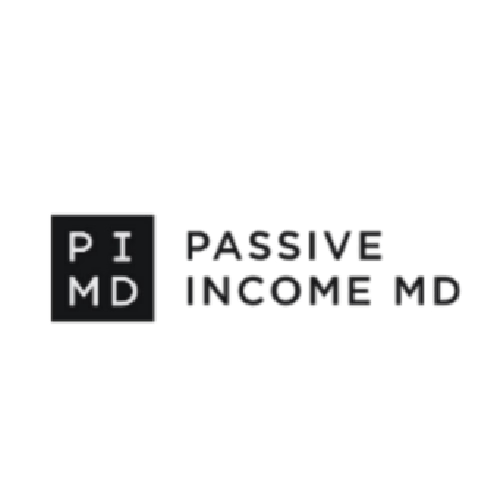Traditional investing is no longer the only path to building wealth, and investors know it. High-net-worth individuals now allocate more than 50% of their portfolios to alternative assets, and that number keeps climbing.
Why? Because today’s savvy investors are looking for more than market swings and slow growth. They want stability, passive income, and higher returns—and they’re finding it outside of Wall Street.
In this blog, we will explain what alternative investments are and why they have become essential in modern portfolios, as well as the most promising options to consider right now if you’re ready to diversify and grow your wealth, like the pros.
What Are Alternative Investments?
Alternative investments are assets that don’t fall into the traditional buckets of stocks, bonds, or mutual funds. They live outside Wall Street’s typical offerings and that’s exactly why more investors are turning to them.
Instead of relying solely on public markets, investors are exploring opportunities that offer greater control, potential tax advantages, and more substantial returns, especially in times of market volatility.
Common Types of Alternative Investments:
- Real Estate – From multifamily to commercial, real estate offers passive income, appreciation, and tax perks.
- Private Equity – Investing directly in private companies, often with the goal of significant upside when those companies grow or exit.
- Venture Capital – High-risk, high-reward funding for early-stage startups with explosive potential.
- Hedge Funds – Professionally managed funds that use a variety of strategies to generate returns, often uncorrelated with the stock market.
- Commodities – Gold, oil, and agricultural products are tangible assets that act as inflation hedges.
- Cryptocurrency – Digital assets like Bitcoin and Ethereum, known for high volatility but strong upside potential.
Why They’re Gaining Traction
In today’s environment of inflation, rising interest rates, and stock market uncertainty, investors are searching for stability, diversification, and cash flow. Alternative investments deliver all three. Plus, they often come with less correlation to traditional markets, making them powerful tools for protecting and growing wealth, especially in uncertain times.
Why Traditional Strategies No Longer Cut It Alone
The investment landscape has evolved, and traditional strategies like the 60/40 portfolio—allocating 60% to stocks and 40% to bonds—face significant challenges. This approach, once considered a balanced strategy, is now under scrutiny due to changing market dynamics.
Market Volatility and Inflation Concerns
Recent years have seen increased market volatility, driven by factors such as inflation and geopolitical tensions. For instance, in 2022, a globally diversified 60/40 portfolio declined about 16%, prompting investors to question its effectiveness.
The 60/40 Portfolio: An Outdated Strategy?
Experts argue that the traditional 60/40 mix may no longer provide the diversification and risk mitigation it once did. Bob Rice, Chief Investment Strategist at Tangent Capital, noted that the factors that previously made the 60/40 portfolio effective are no longer reliable, suggesting that investors need to explore alternative asset classes.
In response to these challenges, investors increasingly turn to alternative investments to diversify their portfolios. Assets such as real estate, private equity, and commodities often have low correlation with traditional markets, offering potential stability during market downturns. Diversification works best when assets are uncorrelated or negatively correlated, as this can reduce overall portfolio volatility.
Top Alternative Investments to Watch in 2025
As traditional portfolios face increasing pressure from inflation and market volatility, investors are shifting their focus toward alternative investments that offer diversification, stability, and long-term growth. These five categories stand out in 2025 for their performance potential and growing accessibility.
Real Estate Syndications and Multifamily Investing
Real estate syndications continue to attract attention for their ability to generate passive income while providing strong tax advantages. Multifamily properties, in particular, remain a favored asset class thanks to rising rental demand and limited new supply in key markets. Investors benefit from stable cash flow, long-term appreciation, and the ability to participate in institutional-quality deals without managing properties directly.
Private Equity and Business Lending
Private equity offers access to early-stage companies and established businesses seeking growth capital. With the right partners, investors can achieve higher returns than public markets typically allow. Business lending—including direct loans and revenue-based financing—also provides opportunities to generate predictable cash flow while supporting small business growth.
Farmland and Timberland
These real assets serve as reliable inflation hedges and deliver consistent returns over time. Farmland produces income through crop yields, while timberland generates returns through harvest cycles and land appreciation. Both assets tend to perform well regardless of broader market trends, making them valuable additions to a long-term portfolio.
Crypto and Digital Assets
Despite volatility, digital assets are evolving beyond speculation. Blockchain-based investments—including tokenized real estate and decentralized finance (DeFi) platforms—reshape how investors access and manage capital. While the space remains high risk, it also offers unique innovation and early-mover advantage for those who do their due diligence.
Who Should Consider Alternative Investments?
Alternative investments aren’t just for institutional players anymore. As access continues to expand, both accredited and non-accredited investors are exploring opportunities beyond the public markets. However, understanding who these investments are best suited for remains essential.
Accredited investors typically have more flexibility and access to a broader range of private offerings—such as real estate syndications, private equity, and hedge funds. For those who meet the SEC’s income or net worth requirements, alternatives can offer meaningful portfolio diversification and the potential for higher returns.
That said, non-accredited investors are also finding their place in the space. With the rise of crowdfunding platforms and tokenized assets, new doors have opened for investors looking to get started at lower entry points.
Alternative Asset Investment Considerations
Alternative investments are a strong fit for those seeking to:
- Diversify beyond the traditional 60/40 stock-bond split.
- Generate passive income streams.
- Hedge against inflation and economic uncertainty.
Still, these investments require careful consideration. Illiquidity, longer hold periods, and market-specific risks demand thorough due diligence. Investors should evaluate each opportunity’s structure, underlying assets, and sponsor track record before committing capital.
Understanding the balance between risk and reward—and aligning opportunities with your financial goals—is key to making alternatives a smart part of your wealth-building strategy.
How to Get Started with Alternative Investments
| Step | What to Do | Why It Matters |
| 1. Know Your Risk Tolerance | Evaluate your financial goals, time horizon, and comfort with illiquidity. | Alternative investments often involve longer commitments and less liquidity. Understanding your risk profile helps guide smart decisions. |
| 2. Define Your Goals | Clarify whether you’re looking for passive income, diversification, growth, or tax advantages. | Different alternative assets serve different purposes—knowing your “why” helps you pick the right ones. |
| 3. Start Small | Begin with lower minimum investments or fractional shares through crowdfunding or tokenized platforms. | Starting small lets you learn by doing without overexposing your portfolio. |
| 4. Leverage Trusted Platforms or Advisors | Work with experienced sponsors or financial professionals who specialize in alternatives. | Quality guidance and vetted opportunities can help you avoid common pitfalls. |
| 5. Keep Learning | Use trusted resources like Real Vision, BiggerPockets, Wealth Unfiltered Podcast, or courses from CAIA. | Ongoing education ensures you stay informed and make more confident investment decisions over time. |
Key Alternative Investing Takeaways
The era of relying solely on stocks and bonds to build wealth is quickly becoming outdated. In today’s landscape, alternative investments offer a powerful way to diversify your portfolio, generate passive income, and hedge against market volatility. With technology breaking down barriers to entry, these opportunities are no longer reserved for institutions or ultra-wealthy individuals—they’re accessible to everyday investors ready to think long-term.
Among the most strategic options is multifamily real estate. With its potential for steady cash flow, tax advantages, and long-term appreciation, it stands out as a compelling choice for those seeking income and equity growth. Multifamily investments are also more resilient during economic downturns, making them an ideal cornerstone for a modern portfolio.
As more people embrace a mindset focused on sustainable, resilient wealth, alternatives like multifamily real estate are taking center stage. The earlier you start exploring these options, the more time you have to realize their full potential.
Want to learn more, book a call today:





















